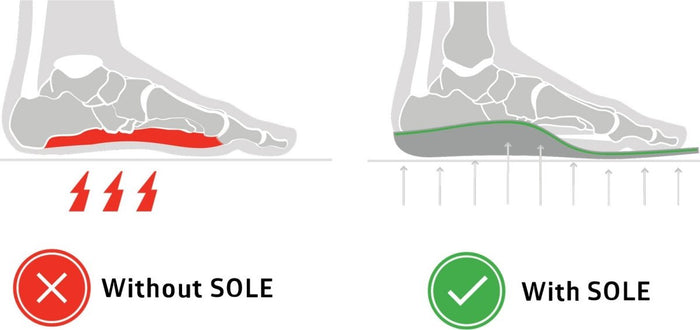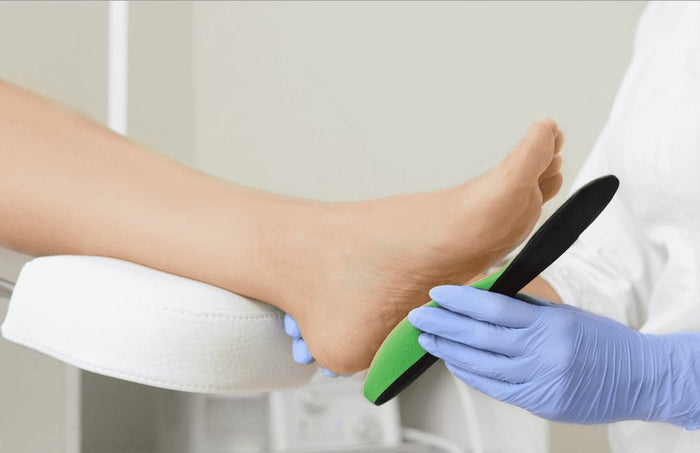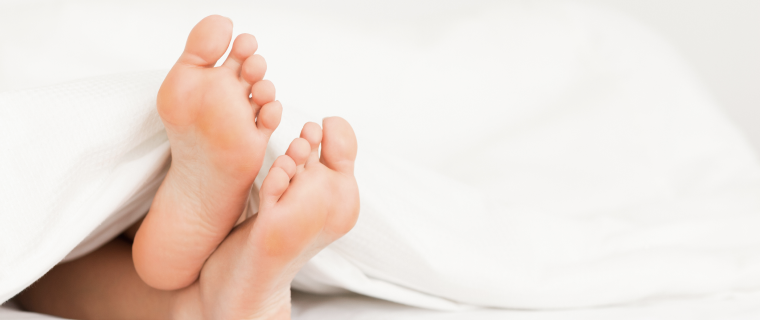Insole Myths
There are plenty of myths and misconceptions about insoles. Sometimes, with all of the myths milling around out there, insoles can get a bad reputation. While some of these myths simply have eroded due to improvements and research over time, others were never based in fact from the start.
Over the years as insoles have become more popular to help consumers deal with their foot ailments, certain myths and untruths have become popularized due to lack of education on the subject. This blog is intended to help detail and explain some of these myths, as well as to explain how SelectFlex Arch-Adjustable Support insoles deal with these mythical claims.
1) When It Comes To Shoe Insoles, Softer = Better
Completely soft insoles are not only ineffective, but they actually “pamper the problem”. You may find that initially you love the feeling of slipping your foot into a shoe with a soft, cushiony insole, but in reality those types of insoles do nothing to fix the root problem: misalignment of the feet.
A good insole should provide a mixture of supportive, hard structures and softer structures which work together to reshape the alignment of your feet.
SelectFlex provides a PUR polyurethane medical grade footbed for maximum comfort while dynamically aligning your foot arch from a flexible lifting arch that supports your foot with three adjustable support levels.
2) Insoles Should Be Comfortable Right Out Of The Box
Similar to the theory that “softer = better”, most people think that their insoles should feel comfortable the first time they put them in their shoes. Once you learn the purpose of insoles, to reshape and realign your feet to their anatomical perfection, it should be easy to understand why insoles have a breaking-in period.
Insoles for your feet work much like braces for your teeth, applying pressure to specific areas in order to move them into correct position. That pressure can feel uncomfortable while your muscles, tendons and bones re-learn how to work together to form a proper shape.
SelectFlex molds to your unique arch shape to provide arch aligning comfort. Our initial recommendation is wear our insoles for 2 to 4 hours a day for the first week to allow your feet to adjust to our unique lifting arch to support and align your foot.
3) Insoles Are For People With Foot Pain
While shoe insoles certainly do help many people overcome foot pain, that is not the only reason to wear them.
As the children’s song goes, “The foot bone’s connected to the leg bone, leg bone’s connected to the knee bone…” Nature gave our bodies the perfect pattern to deal with movement, especially agility moves like running and jumping. Because the body works together as a chain of muscles, ligaments, and bones, when one part is misaligned it throws the whole system out of whack.
Through realigning the placement of the feet, shoe insoles have been shown to help with pain and inflammation in the knees, hips and lower back. So the next time you experience problems with one of those joints, make sure your feet aren’t the true culprits!
SelectFlex is the first insole to provide three adjustment levels to dynamically lift your arch into correct comforting alignment to reduce pain and dynamically realign your foot throughout the entire gait cycle.
4) Insoles Work By Bracing Your Feet
Just as your insoles cannot work if they’re too soft, they don’t work by bracing, either. Many insoles provide support and stability to the arch while completely ignoring the front and rear of the foot. An effective insole has zones of support and cushioning designed to retrain your muscles and tendons to move in a more natural way.
There is an anatomically-ideal pattern for foot movement while walking/running (spiral torsion): moving from the rear lateral (outside) of your heel at an angle through the center of the arch and finally pushing off at the inside of the big toe. This movement cannot be supported by simply bracing the arch, your insoles should encourage it with the right kind of flexibility.
SelectFlex has a PoweCup that delivers up 50% more ankle stability with up 89% more flexible lifting arch support to brace your feet in aligned comfort throughout the entire gait cycle.
5) Insoles Are Only Made For Athletic Shoes
While the majority of insoles are made to be used in athletic shoes, some insoles are designed to work in a variety of shoes.
SelectFlex is designed to work in multiple shoe types with footbed trim lines to customize their fit into your favorite shoes.
6) You Only Need 1 Pair of Insoles - Move Them From One Pair To Another
While it is true that you can theoretically move your insoles from one pair of shoes to another, as humans we tend to forget these things. If you want to see the true effects of retraining your feet and posture, it’s best to ensure the shoes you wear most often have their own, dedicated pair of insoles. This might mean investing in 2 or 3 pairs of insoles.
SelectFlex is 1/4 the cost of medical orthotics and provides three adjustment levels to customize your arch support for maximum comfort.
7) Insoles Are Only For ‘Old People’
Insoles are not just for ‘old people’ or those who must wear ‘ugly’ orthopaedic shoes. Regardless of age, foot problems can affect anyone. Painful arches, heel pain and bunions are but a few. Pain related conditions such as arthritis or diabetes can affect anyone. Such conditions may benefit from insoles.
SelectFlex’s PUR medical grade footbed distributes foot pressure while the PowerLift Arch further distributes foot pressure over the entire arch to alleviate arthritic and diabetic pressure points.
8) You Need Insoles For ‘Flat Feet’
Not all people with ‘flat feet’ need insoles. Some people have naturally low arches. Generally if your feet are pain free then you won’t need insoles regardless of whether you have ‘flat feet’. Your first step should be to check your shoes. Make sure you wear shoes with some structure and support to them.
A majority of our customers with flat feet, pes planus or fallen arches wear SelectFlex that provides just the right amount of adjustable lifting arch support from three settings.
9) Custom Made Insoles Are Much More Expensive
Basic over-the-counter, mass produced, foot insoles are typically cheaper than custom-made insoles (at first glance). However, over-the-counter foot insoles generally have a much shorter lifespan. As such, cheaper insoles may end up being more expensive over time. Without professional help you might purchase the incorrect product or one that is ill-fitting. This could aggravate your foot condition instead of improving it.
SelectFlex is engineered from premium medical grade polymers to ensure support and guaranteed to last up to 3 months and often 6 to 9, at 1/4 the cost of custom insoles.
Find out more today about SelectFlex!
FOLLOW US
















